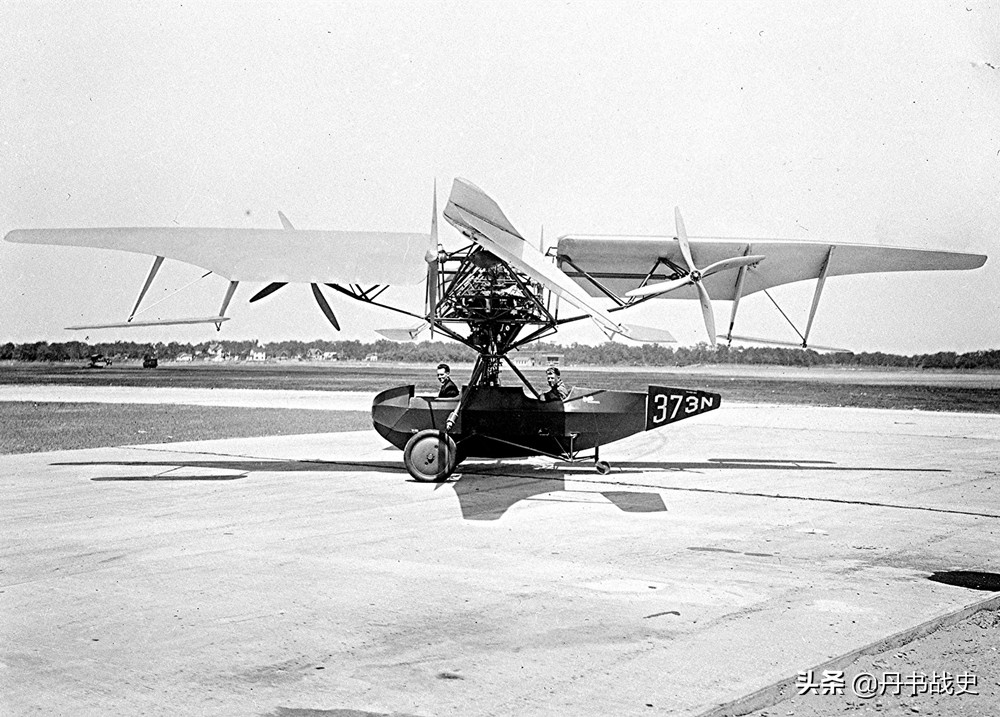Maitland. B. Blick is an American inventor, he and the famous Sikorsky is the same era of people, have been committed to the development of helicopter technology, the difference is that Sikorsky has achieved great success, and Blick is little known, but does not mean that he has achieved nothing, some aviation experts believe that he is a pioneer of helicopter technology, to a certain extent inspired other designers.

Born in 1903, Bleecker studied aviation at the University of Michigan, and in 1922 was invited by a professor to study a new type of aircraft that could take off and fly vertically, that is, helicopters, and the relevant research achieved certain technical results. After graduating from university, Blick did not give up researching helicopters, and in 1926, he approached curtiss to collaborate on the development of this new aircraft, which became the Curtiss-Bleck SX-5-1.
The SX-5-1 was a very peculiar aircraft that had begun to take on the basic characteristics of a modern helicopter, and curtis signed a contract in 1927 to build a full-scale prototype, with 4 draftsmen assisting Blecker in his work.
The helicopter has a small two-seater body with a metal tube frame to support the engine and propellers above. Bleecker wanted to use Pratt & Whitney Wasp's 9-cylinder air-cooled star engine, which produced 420 horsepower and was a good aircraft engine at the time, but Pratt & Whitney was very concerned about this, believing that Bletchell's helicopter was unreliable and would affect the reputation of the company's engine, and it was not until Bleecker signed a waiver agreement to get the engine.
With the engine also different from direct use, since this engine is used vertically mounted on the aircraft, the SX-5-1 needs to flatten the engine, which affects the heat dissipation, Bleecker solved this problem by adding a baffle between the two adjacent cylinders to change the direction of a part of the airflow.
Another key technology is the propeller of the helicopter, modern helicopters through a series of mechanical equipment to adjust the pitch of the propeller to change the lift, by adjusting the paddle disc tilt angle to achieve horizontal movement of the helicopter, but this is a very complex set of mechanical equipment, how is the SX-5-1 solved?
The SX-5-1 uses a 4-blade propeller, which is framed and covered with skin like a fixed-wing aircraft wing, and the part near the propeller hub is wider and thinner near the wingtip. Instead of driving the propeller through the propeller hub, the engine drives four other small vertical propellers in the support frame under the propeller shaft, and rotates the main propeller by pushing the air backwards, which is similar to the later installation of jet engines on the propeller tip.
In order to change the pitch of the blades, a rudder surface similar to an aileron is installed under the trailing edge of each blade, and the driver can change the tilt angle of the blade by adjusting the angle of this rudder surface.
The early tests were conducted indoors, and the only consolation for Brick was that "one of the three landing gear left the ground," perhaps proving that the propeller he designed did produce lift, but not enough. At the same time, it was also found that the fuselage would spin uncontrolled, so the air rudder controlled by the foot pedal was installed at the tail of the fuselage, which could deflect a large angle, change part of the airflow direction to counteract the spin, and the pilot could also change the course through it.
SX-5-1 in the early 30s outdoor flight tests, according to Bleecker's later recollection, he said that the helicopter completed hovering, vertical take-off and landing, any direction of maneuvering, but the helicopter has noise, jitter and other defects, as a technical verification of the prototype should be said to be qualified, but to develop into a practical model still need to improve a lot of places.
The prototype had several mechanical failures during the test, and in a test in the summer of 1931, the gear failure occurred again, Blick considered replacing the gear with a flexible connection, he issued an order to the factory for $90, did not expect that Blick did not get the gear, curtiss in the Great Depression era believed that the SX-5-1 was a project that "did not have any financial return" and refused to continue to invest, so many people said that the SX-5-1 was an "invention delayed by $90".